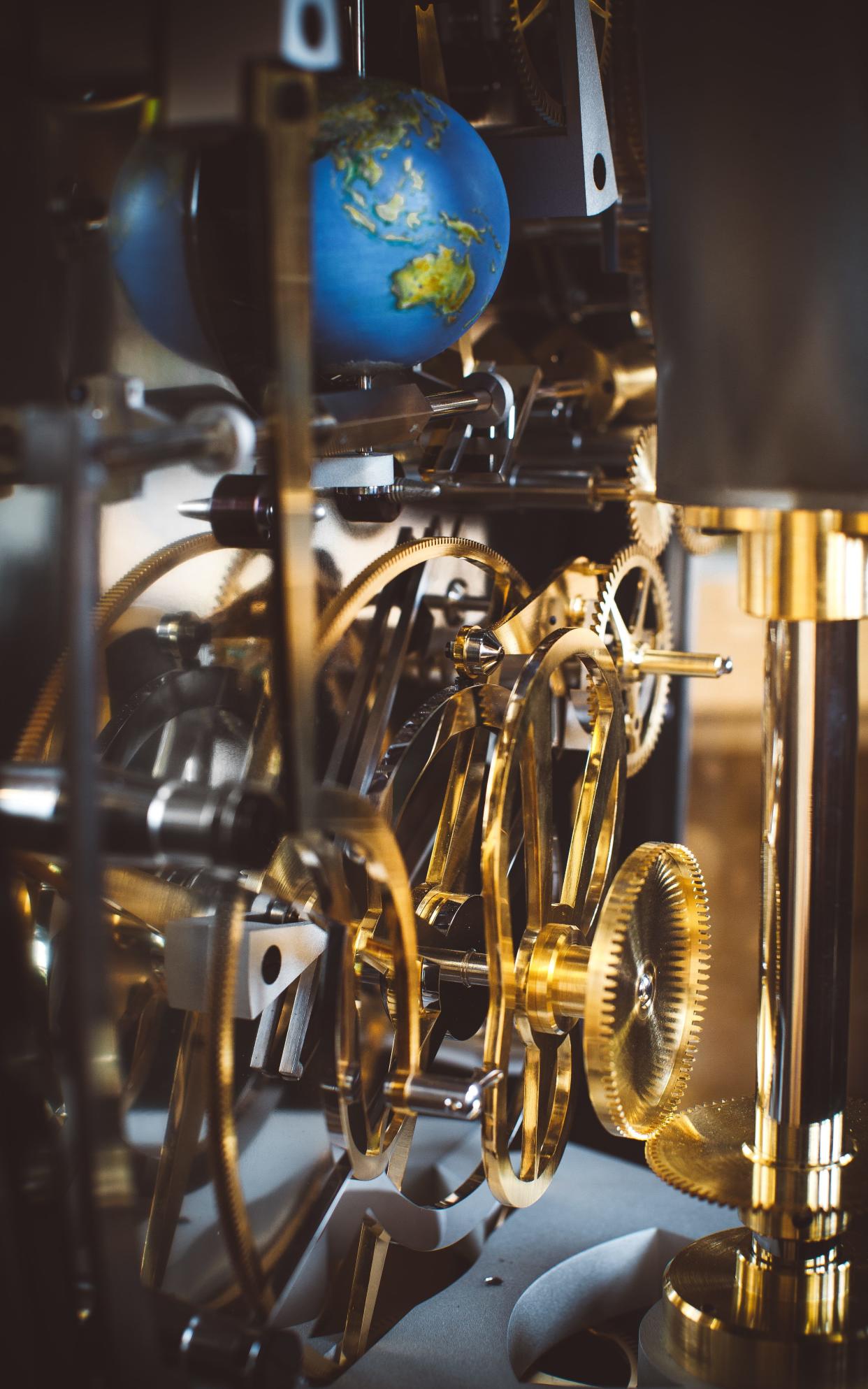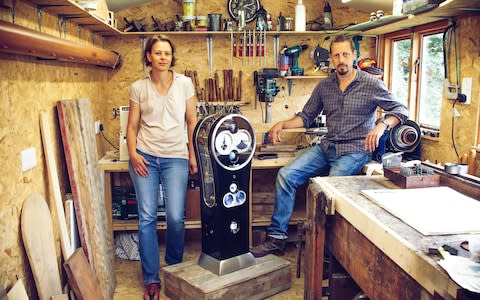5,000 hours of manpower, 750 parts... The making of a £175,000 clock

For the past three years, George de Fossard has been travelling from his home in Wiltshire, to his workshop in Frome, to work on the Solar Time Clock.
In total, he and his wife Cornelia have spent 5,000 hours on this extraordinary object, which, as well as telling the time based on the position of the sun in the sky, gives sunset and sunrise information for any given latitude and longitude, and features a state-of-wind indicator, a solar-time dial, a calendar and an exquisite globe made of brass and hand-painted in oils, which rotates to the meridian. The case was made by Cornelia, with ebonised pearwood veneer.
In all, the clock comprises about 750 handmade parts, and has attracted a lot of attention in the arcane but thriving world of horology and clock collectors.It recently made its London debut at The Clockworks, a small museum-cum-studio in south London, and is now headed for the Clockmakers’ Museum.

George is a second-generation clockmaker. De Fossard Clocks was started by his father, Nicolas de Fossard, in 1968. George, 40, grew up in Bath and did an apprenticeship in mechanical engineering, then an engineering degree at the University of Nottingham.
He trained as a clock restorer in West Dean College in Chichester, where he met Cornelia, who was studying furniture restoration. George took over the company in 2005, working mainly as a restorer, which he still does to support his true passion: making. There are only a handful of clockmakers in the country, and most of them do restoring to make a living.

"The better you are at restoring, the more anonymous you have to be," says George, "which is a strange paradox." "George is a perfectionist," says Cornelia. "Restoration can involve a piece that’s been mangled for years, and may not have worked properly to start with."
They found an investor to support the creation of the Solar Time Clock, because they knew what a profoundly ambitious undertaking it would be, and what a drain both on their time and finances.
Now the goal is to sell the clock in order to recoup the investment (£175,000 is the asking price). In the meantime, the Solar Time Clock will take its proud place among prestigious forebears in the museum.
The Solar Time Clock will be on display at Salon QP, Saatchi Gallery, London SW3, 2-4 November; defossard.co.uk

